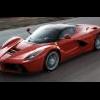Search the Community
Showing results for tags 'electrified'.
-
Source: https://www.arenaev.com/mercedes_teases_electric_gclass-news-2786.php Mercedes-Benz is gearing up to revolutionize the iconic G-Class with an all-electric variant, and CEO Ola Kaellenius claims it could outshine its traditional counterpart in off-road prowess. In an outdoor video featuring the electric G-Class, Kaellenius, along with chief engineer Fabian Schossau, shed light on the vehicle's development and unique features. Four years have passed since Mercedes-Benz's initial announcement of an electric G-Class, and much remained shrouded in mystery - until today. Today we got a closer look at the electric G and its off-road capabilities - cue the video: One glance at the electric G-Wagon, and you'd be hard-pressed to miss its signature boxy silhouette. Kaellenius proudly states that this electric incarnation retains the unmistakable appearance of a true G-Class. While the video's prototype was camouflaged, Mercedes-Benz had previously unveiled the Concept EQG in 2021, offering a glimpse of the essential design elements. For rigorous testing, the development team headed to the Schoeckl mountain in Graz, Austria - the very place where the G-Class was born. The electric off-roader underwent a grueling regimen, ascending and descending the mountain 336 times. It showcased its off-road prowess thanks to a novel drivetrain concept featuring four electric motors, one at each wheel. Smart software managed torque distribution, enabling remarkable off-road capabilities, including a G-turn. Mercedes is not just focusing on off-road capabilities; it's also pushing the envelope in battery technology. The electric G-Class will employ a cutting-edge silicon anode battery, expected to boost energy density by 20 to 40% compared to conventional lithium-ion batteries. This advancement could substantially extend the vehicle's range, a crucial factor for electric off-roaders. The G-Class is known for its ruggedness and has a cult following. The electric variant's potential to match or even surpass the traditional model in off-road capabilities is a significant point of interest. It marks a notable shift in the automotive landscape towards electrification without compromising on performance. While purists may raise their eyebrows at the notion of an electric G-Class, Kaellenius assures them that the traditional ICE (Internal Combustion Engine) version will continue alongside the electric variant. This dual approach ensures that fans of the iconic off-roader can still experience the roaring power of a gasoline engine. One detail that remains elusive is the exact release date for the electric Mercedes-Benz G-Class. However, industry watchers speculate that it could hit the market in 2024, likely as a 2025 model-year offering.
-
[extract] After dealing in the Chinese automotive market for 30 years, the German automaker Volkswagen (VW) is enjoying a sustainable growth. As a matter of fact, it has been determined to have invested an amazing figure, totaling
-
- motoring
- other news
-
(and 24 more)
Tagged with:
- motoring
- other news
- events
- china
- europe
- germany
- volkswagen
- vw
- german
- automaker
- german automaker
- investment
- china investment
- vw china investment
- faw volkswagen
- shanghai volkswagen
- shanghai
- electric vehicles
- electric
- electrified
- crossblue
- coupe
- concept
- crossblue coupe
- crossblue coupe concept
- vw coupe concept
-
Exploring the craters at the moon's north and south poles may be even more challenging than previously thought for future astronauts. New NASA calculations now show that solar wind streaming over the rough lunar surface may electrically charge polar craters on the moon. The moon's polar craters are of particular interest to researchers because resources, including water ice, exist at these lunar structures. The moon's orientation to the sun keeps the bottoms of polar craters in permanent shadow, allowing temperatures there to plunge below minus 400 degrees Fahrenheit (minus 240 degrees Celsius), cold enough to store volatile material like water for billions of years. "However, our research suggests that, in addition to the wicked cold, explorers and robots at the bottoms of polar lunar craters may have to contend with a complex electrical environment as well, which can affect surface chemistry, static discharge, and dust cling," said William Farrell of NASA's Goddard Space Flight Center in Greenbelt, Md., the lead author of the study. These new observations contribute to our evolving understanding of the moon, said Gregory Schmidt, deputy director of the NASA Lunar Science Institute at NASA's Ames Research Center in Moffett Field, Calif. "This important work by Dr. Farrell and his team is further evidence that our view on the moon has changed dramatically in recent years," Schmidt said. "It has a dynamic and fascinating environment that we are only beginning to understand." Solar wind hits the moon Solar wind is a thin stream of electrified components of atoms



